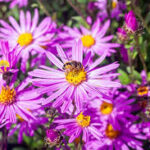
Flowers have played a significant role in religious rituals and spiritual practices across cultures and throughout history. Revered for their beauty, fragrance, and symbolic meanings, flowers serve as offerings, decorations, and objects of devotion in various religious traditions worldwide. In this exploration, we delve into the profound significance of flowers within religious ceremonies and the spiritual symbolism associated with different floral motifs.
**1. Symbolism and Sacred Meanings**
Flowers are laden with symbolic meanings that convey spiritual truths and evoke divine attributes within religious contexts. For example:
– **Lotus (Nelumbo nucifera):** In Hinduism and Buddhism, the lotus flower symbolizes purity, enlightenment, and spiritual rebirth. The lotus’s ability to emerge from murky waters and bloom into pristine beauty represents the journey of the soul towards spiritual awakening.
– **Rose (Rosa spp.):** In Christianity, the rose is associated with the Virgin Mary and represents love, purity, and resurrection. Red roses symbolize the blood of Christ, while white roses symbolize purity and divine grace.
– **Marigold (Tagetes spp.):** In Hindu and Mexican traditions, marigolds are used in religious ceremonies and festivals to honor deities and ancestors. Marigolds symbolize auspiciousness, prosperity, and the passage of souls into the afterlife.
– **Chrysanthemum (Chrysanthemum spp.):** In Japanese Shintoism, chrysanthemums are associated with the Imperial Family and symbolize longevity, rejuvenation, and the cycle of life and death.
**2. Offerings and Devotional Practices**
Flowers are commonly used as offerings to deities and spiritual beings as expressions of devotion and reverence. Offerings of garlands, bouquets, and floral arrangements adorn altars, shrines, and sacred spaces in temples, churches, mosques, and synagogues around the world. The act of offering flowers symbolizes purity of heart, selflessness, and the desire to connect with the divine through beauty and grace.
**3. Decorations and Festive Celebrations**
Flowers play a central role in religious festivals and seasonal celebrations, transforming sacred spaces into vibrant and colorful settings. Decorative flower garlands, floral arches, and intricate rangoli designs (floral patterns made from colored powders) enhance the ambiance of religious processions and communal gatherings. Flowers create an atmosphere of joy, abundance, and spiritual exaltation during religious holidays and observances.
**4. Healing and Purification**
In many indigenous and folk traditions, flowers are used in healing rituals and purification ceremonies to dispel negative energies and promote spiritual well-being. Floral baths, herbal remedies, and aromatic incense made from flowers like lavender, jasmine, and chamomile are believed to restore balance and harmony to the body, mind, and spirit.
**5. Symbolic Offerings in Ancestor Worship**
Ancestor worship and commemorative rituals often involve offerings of flowers to honor deceased loved ones and ancestors. Flowers symbolize the continuity of life, the passage of souls, and the eternal bond between the living and the dead. Floral tributes, such as wreaths and floral arrangements, adorn gravesites and ancestral shrines as expressions of remembrance and respect.
**6. Sacred Gardens and Botanical Sanctuaries**
Many religious traditions incorporate sacred gardens and botanical sanctuaries as places of contemplation and spiritual renewal. Monastic gardens, Zen rock gardens, and Islamic paradise gardens feature carefully cultivated flowers and plants that symbolize divine attributes and spiritual virtues. These tranquil sanctuaries serve as living expressions of religious devotion and ecological stewardship.
**7. Ecological Awareness and Environmental Ethics**
The use of flowers in religious rituals fosters ecological awareness and environmental ethics, promoting reverence for nature and the preservation of biodiversity. Many religious communities advocate for sustainable practices and conservation efforts to protect floral species and natural habitats. The intersection of religion and ecology highlights the interconnectedness of all living beings and the sacredness of the natural world.
**8. Cross-Cultural Perspectives on Floral Symbolism**
Floral symbolism varies across cultures and religions, reflecting diverse interpretations of beauty, spirituality, and the divine. Comparative studies of floral motifs reveal common themes and universal truths that transcend religious boundaries and foster interfaith dialogue and understanding.
In summary, flowers play a multifaceted role in religious rituals, serving as symbols of divine presence, expressions of devotion, and conduits of spiritual transformation. The use of flowers in religious ceremonies underscores the universal appeal of floral symbolism and its profound impact on human experiences of the sacred and the transcendent.
**Flowers and Their Role in Religious Rituals (Part 2)**
Continuing our exploration into the profound role of flowers in religious rituals, we delve deeper into the diverse ways in which floral symbolism enriches spiritual practices and fosters connections between the human and divine realms across different religious traditions worldwide.
**9. Rituals of Blessing and Purification**
Flowers are integral to rituals of blessing and purification in many religious traditions, symbolizing spiritual renewal and the sanctification of sacred spaces. In Hinduism, the practice of “pushpanjali” involves offering flowers to deities during puja (worship) ceremonies as a gesture of devotion and seeking blessings. Similarly, in Indigenous cultures, sacred plants and flowers like sage, cedar, and sweetgrass are used in smudging rituals to cleanse and purify individuals and ceremonial spaces.
**10. Symbolic Representation of Deities and Attributes**
Flowers often serve as symbolic representations of deities and divine attributes in religious iconography. For example:
– In Greek mythology, the goddess Flora is associated with flowers and springtime, symbolizing fertility, abundance, and the cycle of life.
– In Buddhism, the Buddha is often depicted sitting on a lotus flower, symbolizing purity, enlightenment, and spiritual awakening.
– In Hinduism, specific flowers are associated with different deities; for instance, jasmine is sacred to the goddess Lakshmi, representing beauty and auspiciousness.
The use of flowers in religious art and symbolism enhances the visual representation of divine qualities and spiritual ideals, fostering a deeper understanding of religious teachings and narratives.
**11. Commemorative Practices and Funerary Rites**
Flowers play a prominent role in commemorative practices and funerary rites, symbolizing the cycle of life, death, and rebirth. Floral wreaths, garlands, and offerings adorn gravesites and memorial shrines as expressions of remembrance and respect for the deceased. In Christian traditions, lilies are commonly used in Easter celebrations to symbolize resurrection and the triumph of life over death.
**12. Seasonal Festivals and Floral Decorations**
Religious festivals often feature elaborate floral decorations that enhance the festive atmosphere and create a sense of sacred beauty. For example:
– During Diwali (the Festival of Lights) in Hinduism, homes and temples are adorned with marigold garlands and colorful rangoli designs to welcome the goddess Lakshmi and invoke blessings of prosperity.
– In Christian celebrations like Easter and Christmas, churches are decorated with flowers such as Easter lilies and poinsettias to symbolize renewal and the birth of Christ.
Floral displays serve as visual expressions of joy, abundance, and spiritual significance during seasonal observances.
**13. Meditative Practices and Contemplative Gardens**
Many religious traditions incorporate meditative practices and contemplative gardens that feature carefully cultivated flowers and plants. Zen Buddhist gardens, for example, emphasize simplicity and harmony with nature through rock arrangements and minimalist floral compositions. Islamic gardens, known for their geometric patterns and lush plantings, create serene environments for prayer and reflection amidst fragrant flowers like roses and jasmine.
**14. Ecumenical and Interfaith Dialogue**
Flowers serve as universal symbols of beauty and transcendence that foster ecumenical and interfaith dialogue among diverse religious communities. Collaborative efforts to create communal gardens and floral displays promote mutual understanding and cooperation, transcending religious differences through shared appreciation for the sacredness of nature.
**15. Environmental Ethics and Conservation Efforts**
The use of flowers in religious rituals promotes environmental ethics and conservation efforts, encouraging stewardship of natural resources and biodiversity. Many religious organizations advocate for sustainable practices and eco-friendly initiatives to protect floral species and preserve fragile ecosystems. The intersection of religion and ecology underscores the interconnectedness of all living beings and the imperative to care for the Earth as a sacred gift.
**16. Healing Arts and Therapeutic Gardens**
Flowers are valued for their therapeutic qualities in healing arts and holistic therapies. Floral essences, herbal remedies, and aromatherapy oils derived from plants like lavender, chamomile, and rosemary promote physical and emotional well-being. Therapeutic gardens designed with sensory-rich plantings provide spaces for relaxation and contemplation, supporting holistic approaches to health and healing.
In summary, flowers play a multifaceted role in religious rituals, embodying spiritual meanings and facilitating connections between the material and spiritual realms. The use of flowers in religious practices underscores their universal appeal as symbols of beauty, transcendence, and divine grace, fostering reverence for nature and the sacredness of life.
—
This comprehensive exploration illuminates the profound significance of flowers within religious rituals and spiritual practices, highlighting their symbolic meanings, devotional uses, and transformative role in fostering spiritual awareness and ecological stewardship. Discover the universal appeal and enduring beauty of floral symbolism in the context of diverse religious traditions, celebrating the sacredness of nature and the spiritual dimensions of botanical imagery.










